Mixed Reality Raising the Bar for Space Architecture on the Moon and Mars
University of Houston ‘Cage’ Immerses Students in Space by Merging Physical and Digital Worlds

On the third floor of the University of Houston architecture building, inside Olga Bannova’s space architecture laboratory, Paolo Mangili is strapped into a harness suspended on a crane and hovering about two feet above the ground, simulating weightlessness. It’s the sort experienced by astronauts in outer space or on the moon or even on Mars. The research assistant is dressed for it too, wearing an extravehicular activity space suit mockup and mixed reality (MR) goggles. He and a fellow researcher, Vittorio Netti, built the suit.
"I’ve seen earth from space. That was quite a feeling actually because the realism of the simulation is quite overwhelming."
While suspended by the crane, Mangili can take a virtual spacewalk in a simulated virtual reality (VR) environment. Once he plants his feet back down on the ground, his simulated environment changes, and through his goggles he can see the vast landscape that is Mars with a rover already landed and a habitat that astronauts can one day call home. He can then work on them, tinkering, fixing various parts, assuring they are secure. Depending on what the group is studying, he may also be on the moon or even float into the International Space Station via extended reality (XR).
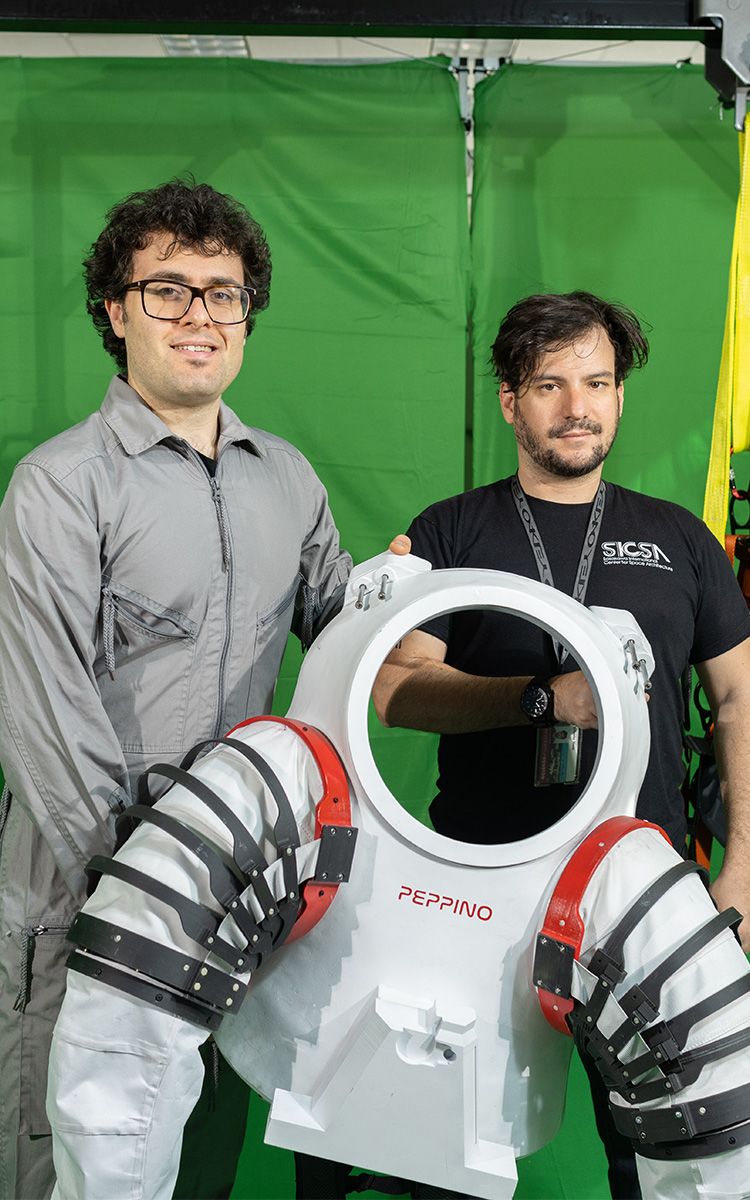
Paolo Mangili and Vittorio Netti
Paolo Mangili and Vittorio Netti
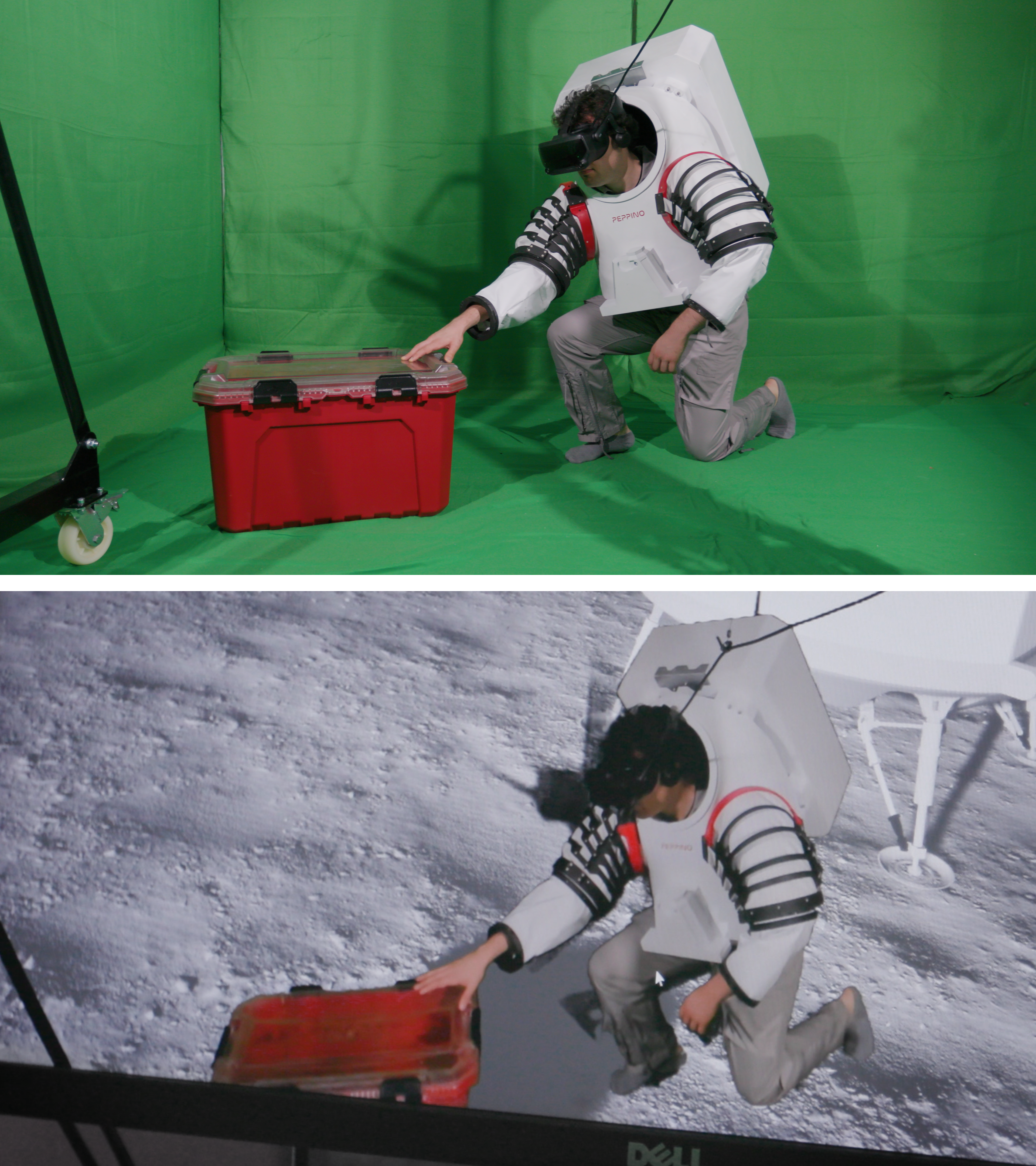
Paolo Mangili investigates the lunar surface in mixed reality.
Paolo Mangili investigates the lunar surface in mixed reality.
No metaphor here, but when it comes to realities, there are plenty. The Bannova lab is an XR lab, with a big family that includes MR, VR and augmented reality (AR).
XR is all about a feeling of realness. It blends physical and digital worlds, mixing natural and intuitive 3D human, computer and environmental interactions. Anybody who's used an Instagram or Snapchat filter, or a virtual eyeglass fitting application, has used mixed reality. It basically puts you into the computer world.
“Any environment can be recreated in virtual reality. I’ve seen earth from space. That was quite a feeling actually because the realism of the simulation is quite overwhelming. It felt great and it felt real,” said Mangili.
In the Bannova lab, XR is used to integrate mixed reality into the design of space structures, making space design more interactive and relatable for designers.
“Optimization of human-system integration is a fundamental task of the hardware design process for crewed space missions,” reports Bannova, in American Society of Civil Engineers library, an article that resulted from studies sponsored by the Boeing company conducted in 2020-2021 and continued through 2023. “Innovation has stalled for a few decades on design methods currently in use. The standard method uses computer simulation or high-fidelity mockups. Such an approach involves high costs and a long implementation time.”
Bannova knows her stuff. She is director of the Sasakawa International Center of Space Architecture (SICSA) and its MS-Space Architecture program (the only one in the world) at the University of Houston. And while most everyone dreams of flying to outer space or going to the moon, Bannova dreams of where you'll sleep once you get there, or what car you'll drive to take you around. Her students work on all of that virtually.
“These technologies should be harnessed to mitigate the dependency on physical prototyping of assets and help optimize the design process, drastically reducing research-and-development time and providing a higher level of immersion,” said Bannova. “However, there is a gap in the general understanding of how to utilize these emerging technologies effectively and apply them for space hardware development.”
It doesn’t look like a gap in the Bannova lab.
The proposed methodology was developed during a six-month research and design study of lunar surface architecture sponsored by Boeing. Netti, head of the XR lab, led the work which was conducted by faculty and students at SICSA. The study sought to define a design process that includes possible surface operations scenarios, development of an evaluation methodology and surface analysis for the conceptual design of a lunar terrain vehicle and a small lunar habitat.
Coincidentally, in the last few years while the space industry struggled to implement new evaluation techniques that place humans in-the-loop, development of commercial immersive technologies spiked and even became affordable.
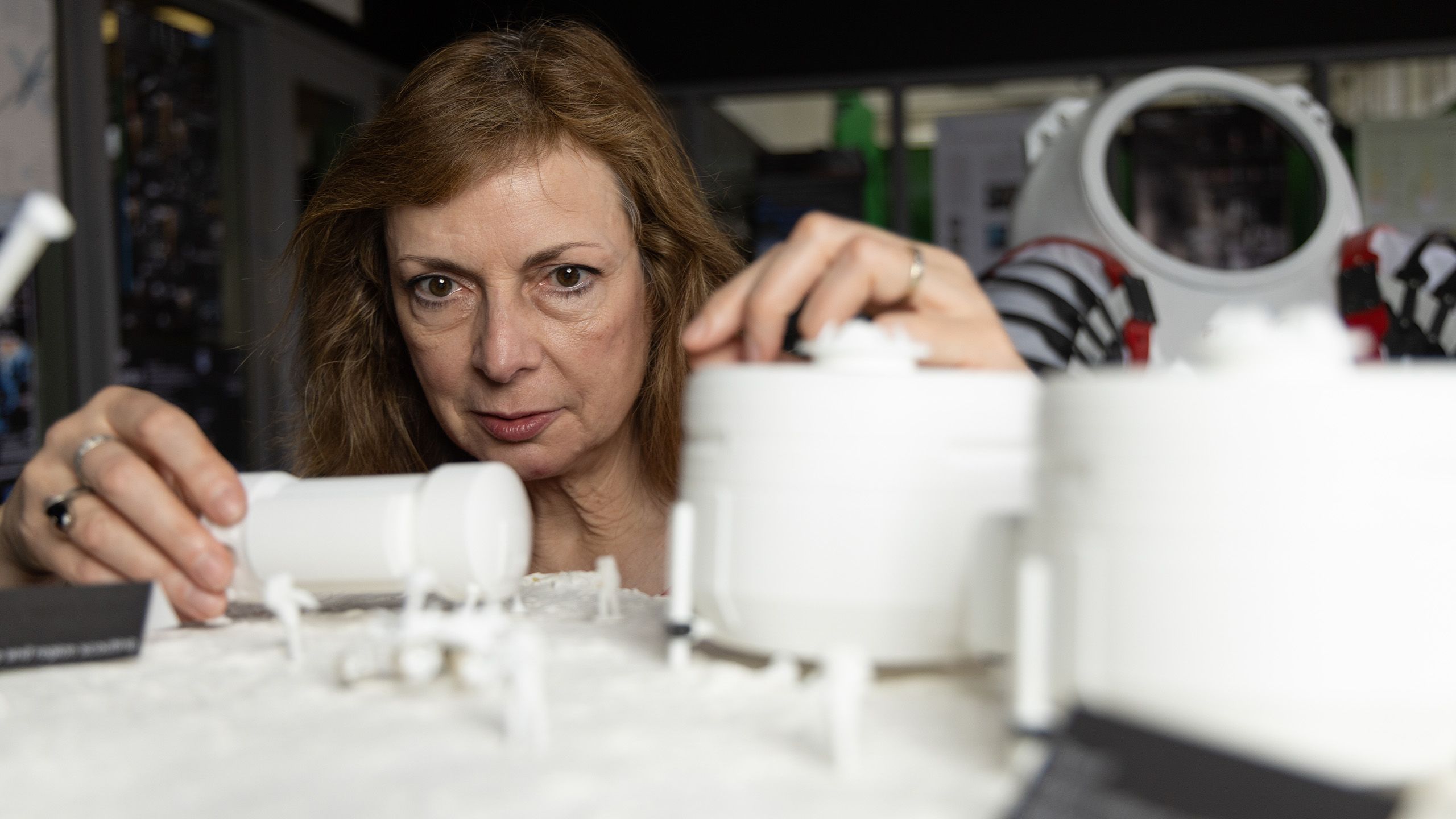
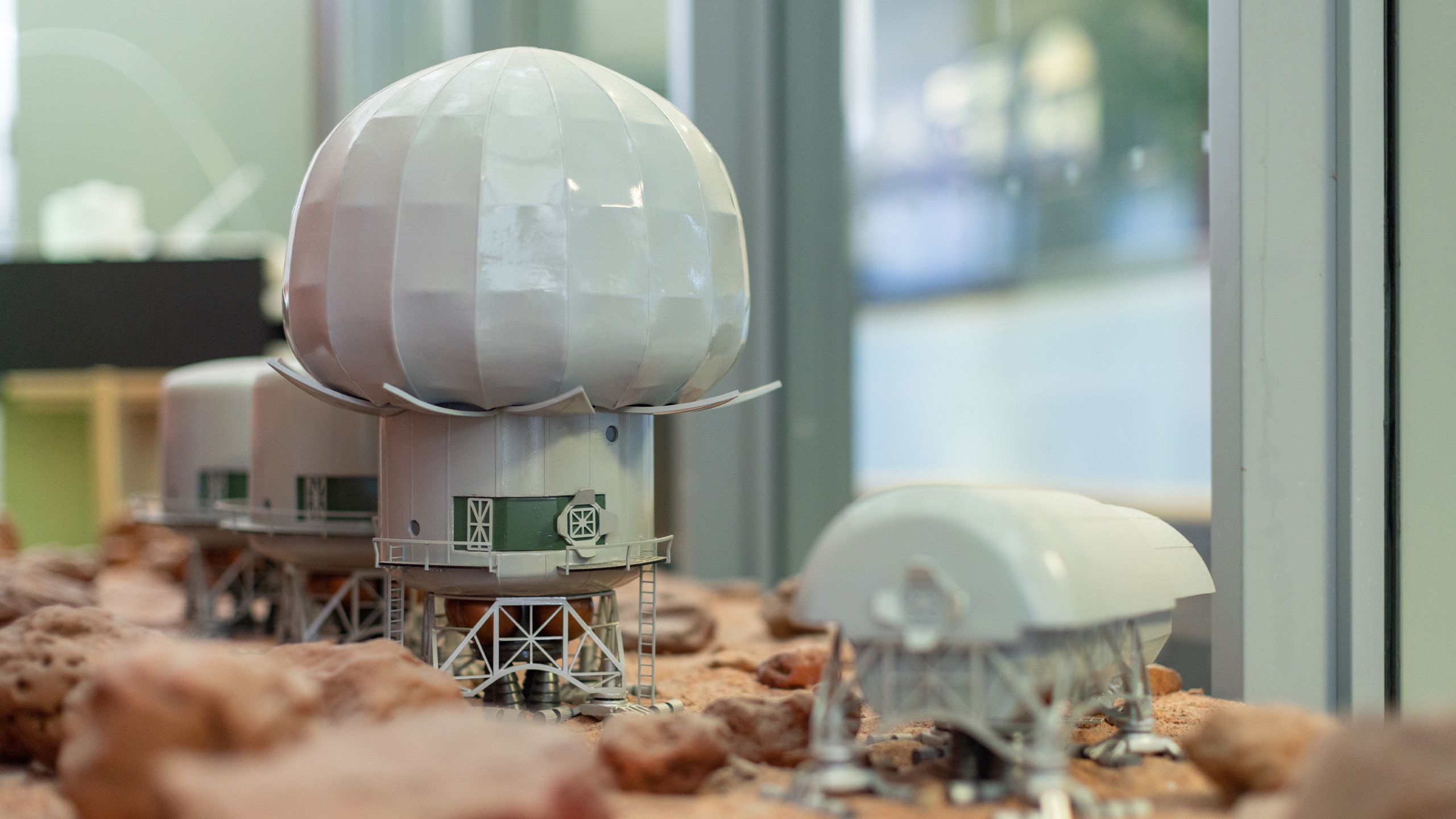
“Our current study for Boeing is to extend the methodology to apply it for testing designs in microgravity, which is different from the moon’s partial gravity environment.”
-Olga Bannova
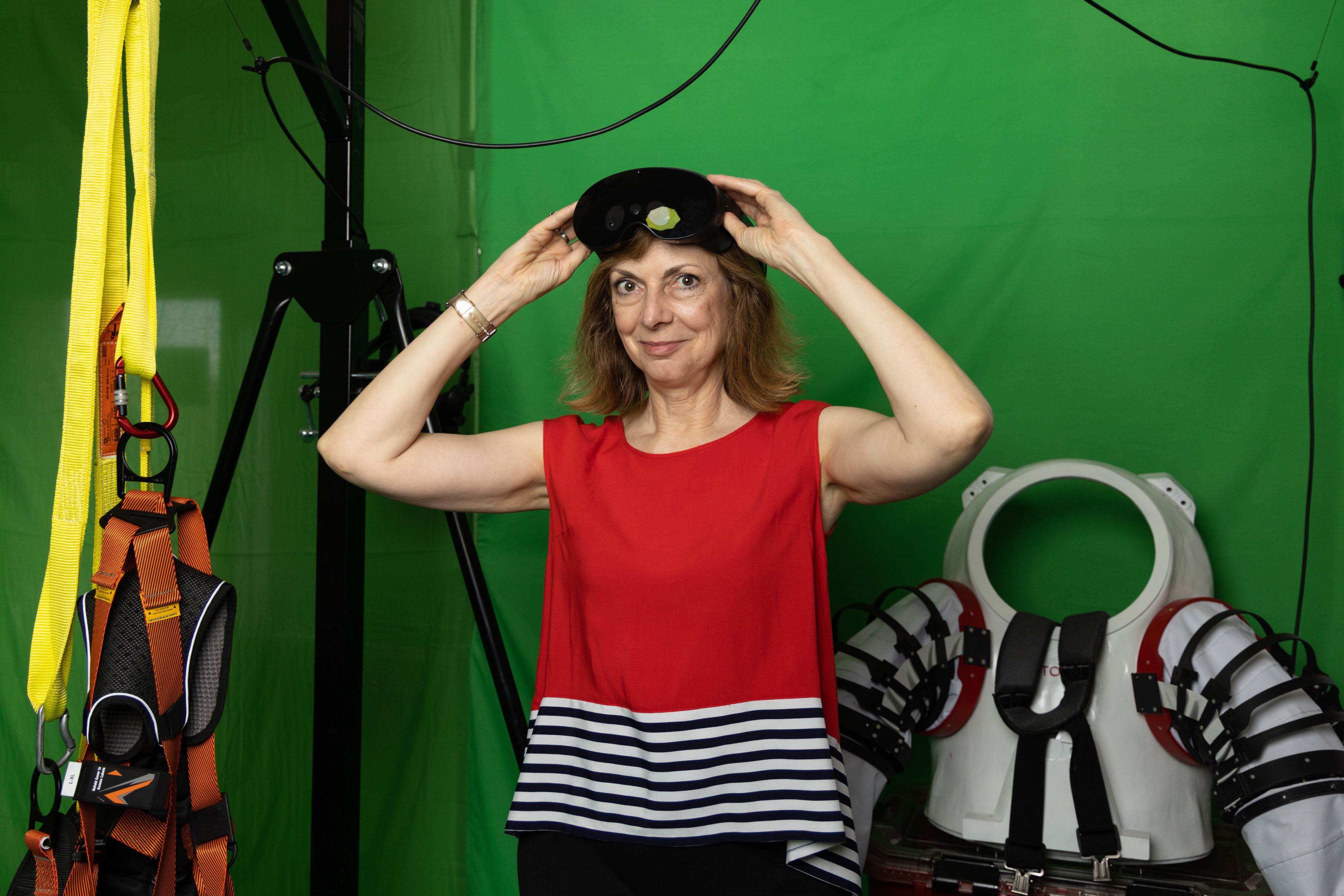
Over two years, Netti designed and built the “cage,” as it is called, that houses the XR setup. It is similar to the NASA Cave with a twist.
“The green screens allow us to set cameras in space. When I look at the screen and I look at the point of view of the camera, I can see the person performing the operation inside the virtual reality environment,” said Netti who runs the show when Mangili is dangling.
There is lots to be done before a Mars landing. Hardware must be tested, lunar rovers deployed. Bannova’s students are working on all of it. Future tasks include demonstrating and testing the proposed system using different types of habitats designed for both lunar and Martian surfaces.
“Our current study for Boeing is to extend the methodology to apply it for testing designs in microgravity, which is different from the moon’s partial gravity environment,” said Bannova. Microgravity is sometimes called zero gravity or the state that exists inside the International Space Station.
Seems an easy test. Bannova’s students have already floated inside there.
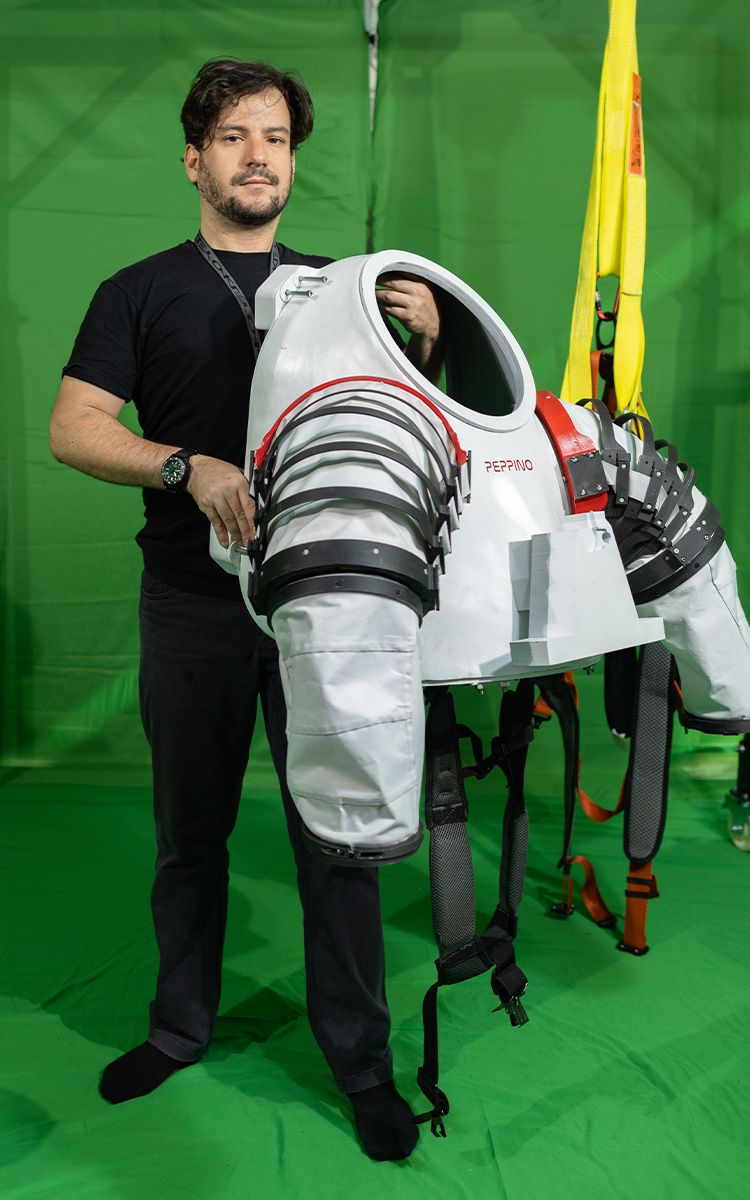
Vittorio Netti
Vittorio Netti
